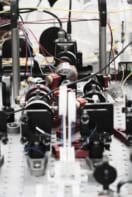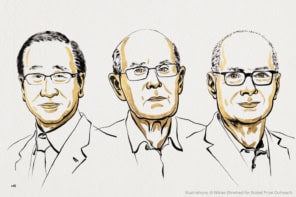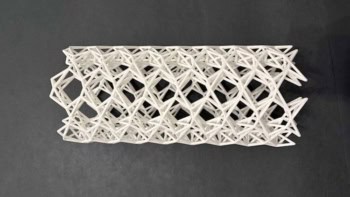
The first-ever spectrometer made from quantum dots has been unveiled by Jie Bao of Tsinghua University in China and Moungi Bawendi of the Massachusetts Institute of Technology in the US. According to its inventors, the instrument could be produced commercially to be as small, inexpensive and simple as a mobile-phone camera. Such compact spectrometers could find a wide range of applications, from gathering scientific data on space missions to sensors integrated within household appliances.
Spectrometry measures the intensity of light as a function of wavelength and is used to study various properties of light-emitting and light-absorbing substances. This makes it an invaluable analytical technique that is used in a broad range of scientific and technological disciplines. Most spectroscopic techniques involve dispersing light in terms of its wavelength. A prism, for example, can be used to bend light into its constituent wavelengths (colours) and a spectrum can then be acquired using a position-sensitive light detector. Bao and Bawendi have taken a different approach, using quantum dots to create an array of band-pass filters for the light to pass through before it reaches a position-sensitive detector.
Tunable artificial atoms
Quantum dots are tiny pieces of semiconductor just a few nanometres across. They are sometimes described as artificial atoms because, like atoms, they absorb and emit light at specific wavelengths. Unlike atoms, however, the wavelengths can be tuned by simply adjusting the size of the quantum dot.
Bao hit upon the idea of using quantum-dot materials in spectrometers while investigating their use in solar cells and light detectors. “I realized this material has a very unique property that no other material can match,” he says, referring to the simple means of tuning the optical response. With this in mind, he began investigating using large numbers of quantum dots in a new type of spectrometer. By monitoring the light that the dots absorbed, it would be possible to determine relative intensities at various wavelengths in the spectrum of the incident light.
Bao and Bawendi’s device is an array of 195 different types of quantum dot with absorption spectral features that cover a wavelength range of 300 nm. The quantum dots were dispersed in solution as colloids. These mixtures were then used to coat individual pixels of the light-detecting array of a digital camera. Because it is compatible with existing camera technology, Bao says that the spectrometer could be mass-produced at a relatively low cost.
Wavelength multiplexing
The new spectrometer employs wavelength “multiplexing”, a technique that was first developed by the telecommunications industry to allow several different signals to be transmitted along the same optical fibre. Multiplexing has already been used for spectroscopy, but Bao says that previous designs were not appropriate for making small, low-cost and high-performance devices. “With these colloidal quantum-dot materials you can do that,” he says.
“This is the first time people have used quantum dots in a spectrometer,” adds Bao. “In fact, it’s the first time that more than a handful of different quantum-dot materials have been used in the same device.”
Beyond the daguerreotype
Bao believes that the device could be the start of a revolution in the practical application of spectroscopy. He likens this to the plethora of applications for photography that emerged as the technology evolved from the cumbersome daguerreotype process – with its huge cameras and long exposure times – to the tiny digital cameras of today.
“If you think of cameras in the old days, their use was very limited – but now cameras are not just used in mobile phones but also for endoscopes, or added to pills to image digestion,” says Bao. “When the process of taking photos was complicated, these applications were hard to imagine.”
The researchers are now investigating how the quantum-dot spectrometer could be used in sensors and are also looking at ways to optimize the device architecture.
Full details of the research are reported in Nature.
- This article first appeared on nanotechweb.org



